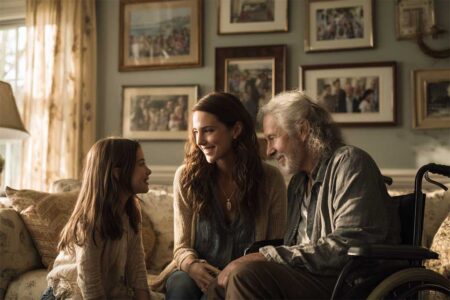In parenting, sometimes nothing is as scary as reality. We wish we could keep our children’s lives full of rainbows, unicorns, and fancy trucks that fly. But we can’t. Because at some point, our children are going to learn about the reality of life, loss, and scary things that are out of our control.
First and foremost, make sure your child knows she is safe
If nothing else, it’s your responsibility as a parent to keep your child safe. And the first way to do that is to tell them they’re safe. Offering hugs and security is your job. So when you sit your child down, make sure he knows that you will do everything you can to keep him as safe as he is, always. During natural disasters, things can always get out of hand. But your kids will feel confident knowing that you’re doing your best for them.
Be gentle in your discussion
Next, tell your children that something horrible or scary, or unplanned happened in the world in a very calm voice. If it makes you cry, that’s okay; you’re sharing your emotional ties to the story. Let them know that what happened is something no one wants to happen and how hard it is for you to share it or know it. But don’t tell them more than they need to know.
Let your child ask the questions
After you tell your child the basics, go ahead and open the floor to their questions and let their questions take them where they need to go. They likely don’t need to know all the statistics that the news is sharing. They may be more interested in what is happening to pets or how kids can get to a hospital. Most likely, kids will need to know how this disaster will affect them or could affect them. Stick with answering their questions, and you’ll keep your children safe.
Expect a follow-up, or two
A day or so after we shared the Haitian earthquake in 2010 with our kids, my 4-year-old came to me saying, “I don’t know what an Earthquake is.” It turned out that he’d been thinking about it off and on through the day before, rolling around the possibilities and the answers we’d given then. But his persona is one that needs to know how things happen. So we took that opportunity to explain fault lines and the earth shifting. Had we shared all of this when we told him about the quake, he might have been overwhelmed with facts. He asked when he was ready.
Offer ways you can help as a family
As Pennsylvanians, we were fortunate during Hurricane Sandy. Our house had minimal damage, and we never lost power. We know it could have been much worse. During the worst of the storm, my kids and I cleaned out their closets, trying on clothing, and setting things aside to give to charity. Later that week, when discussing what to do with the extra 5-year-old boy’s clothing, my son asked if we could bring it to the kids that lost their homes. While that wasn’t possible, we researched drop-off points and lists of supplies and things needed. When we found a drop-off (the ladies of PSMM teamed up to donate), my son raced to his room to find more to help. Many kids want to help other kids, especially those who are able to imagine if they lost their own homes. Let’s not forget, you have the opportunity to open the conversation that there are children and people less fortunate in the world. Teaching your children to set up an international money transfer to support a charity abroad can be a game changer in their compassion. You can bet that talking to them about their options for charity will make a difference.
Further resources to discuss disasters with your kids
- I posted Earthquakes for Kids lists several parent conversations and resources after the Japanese Tsunami in 2011.
- Ready.gov partners with FEMA to prepare children for any disaster
- I wrote Defining an Earthquake after the Earthquake devastated Haiti in 2010, and my kids had questions
- National Association of School Psychologists offers suggestions on how to help children who have experienced a disaster
- CNN.com offers 5 ways to help children cope in a disaster
- On Rusty & Rosy, I share more tips for talking with your children about natural disasters.









